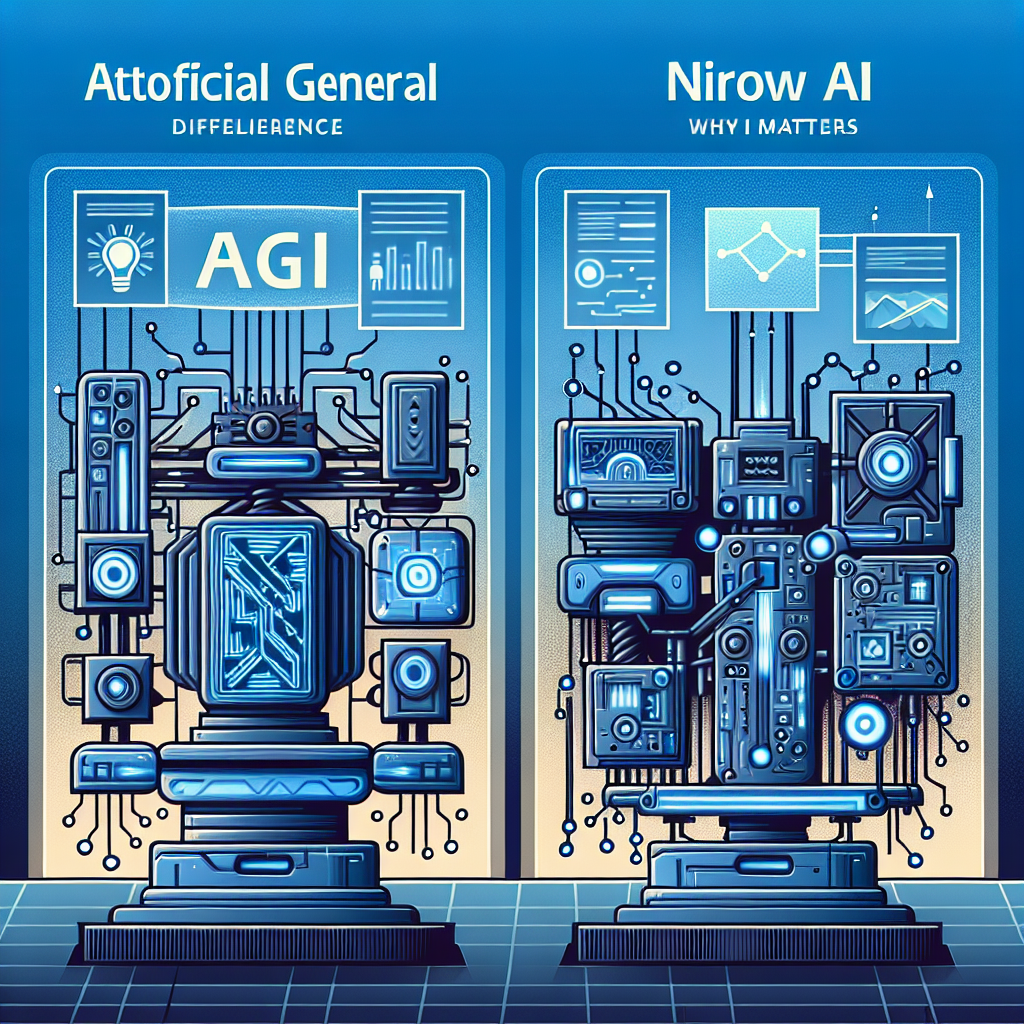Artificial intelligence (AI) has become a buzzword in recent years, with the development of various applications and technologies that aim to mimic human cognitive functions. From virtual assistants like Siri and Alexa to self-driving cars and recommendation systems, AI has penetrated almost every aspect of our lives. However, not all AI is created equal. There are two main categories of AI: narrow AI and artificial general intelligence (AGI). In this article, we will explore the differences between these two types of AI, why it matters, and their implications for the future of technology and society.
What is Narrow AI?
Narrow AI, also known as weak AI, is designed to perform specific tasks or solve particular problems within a limited domain. These AI systems are trained on large datasets and are programmed to perform a single task or a set of tasks with a high level of accuracy. Examples of narrow AI applications include image recognition, natural language processing, and recommendation systems.
Narrow AI systems are highly specialized and excel at performing specific tasks better than humans in some cases. However, they lack the ability to generalize their knowledge and skills to new domains or tasks. For example, a narrow AI system that is trained to play chess at a grandmaster level would not be able to drive a car or compose a symphony.
What is Artificial General Intelligence (AGI)?
Artificial General Intelligence (AGI), also known as strong AI or human-level AI, refers to AI systems that possess the ability to understand, learn, and apply knowledge across a wide range of tasks and domains, much like a human being. AGI systems have the cognitive capabilities to adapt to new situations, think critically, reason, and understand complex concepts.
The ultimate goal of AGI research is to create machines that can match or surpass human intelligence in all cognitive tasks. AGI systems would be capable of learning new skills, understanding natural language, making decisions based on incomplete information, and exhibiting creativity and emotional intelligence.
What Sets AGI Apart from Narrow AI?
The key difference between AGI and narrow AI lies in their level of generalization and adaptability. While narrow AI systems are designed to perform specific tasks within a predefined domain, AGI systems have the flexibility to apply their knowledge and skills to a wide range of tasks and domains.
Another important distinction is the level of autonomy and self-awareness that AGI systems possess. Narrow AI systems are typically programmed to follow predefined rules and algorithms, while AGI systems have the potential to learn and improve themselves over time, much like a human being.
Why Does It Matter?
The distinction between AGI and narrow AI is crucial for understanding the capabilities and limitations of AI systems and their implications for society. While narrow AI has already revolutionized many industries and improved our daily lives, AGI has the potential to transform the way we work, communicate, and interact with machines.
AGI systems could revolutionize fields such as healthcare, finance, education, and entertainment by automating complex tasks, accelerating innovation, and enabling new forms of creativity and collaboration. However, the development of AGI also raises ethical, social, and economic concerns, such as job displacement, privacy and security risks, and the potential for misuse of AI technology.
FAQs
Q: Will AGI replace human jobs?
A: The potential impact of AGI on the job market is a subject of ongoing debate among experts. While AGI has the potential to automate many routine and repetitive tasks, it could also create new job opportunities in fields such as AI research, robotics, and data science. It is essential for policymakers, businesses, and educators to prepare for the future of work in the age of AGI.
Q: Can AGI think and reason like a human?
A: While AGI systems have the potential to match or surpass human intelligence in some cognitive tasks, they are unlikely to replicate the full range of human cognitive abilities in the near future. AGI systems may exhibit advanced reasoning, problem-solving, and decision-making skills, but they are unlikely to possess human-like consciousness, emotions, or intuition.
Q: What are the ethical implications of AGI?
A: The development of AGI raises complex ethical questions regarding privacy, security, bias, accountability, and transparency. It is essential for researchers, developers, policymakers, and the public to address these ethical concerns and ensure that AGI is developed and deployed responsibly and ethically.
In conclusion, the distinction between AGI and narrow AI is crucial for understanding the potential and limitations of AI technology and its impact on society. While narrow AI has already transformed many industries and improved our daily lives, AGI has the potential to revolutionize the way we work, communicate, and interact with machines. It is essential for researchers, policymakers, businesses, and the public to consider the implications of AGI and ensure that AI technology is developed and deployed responsibly and ethically.

